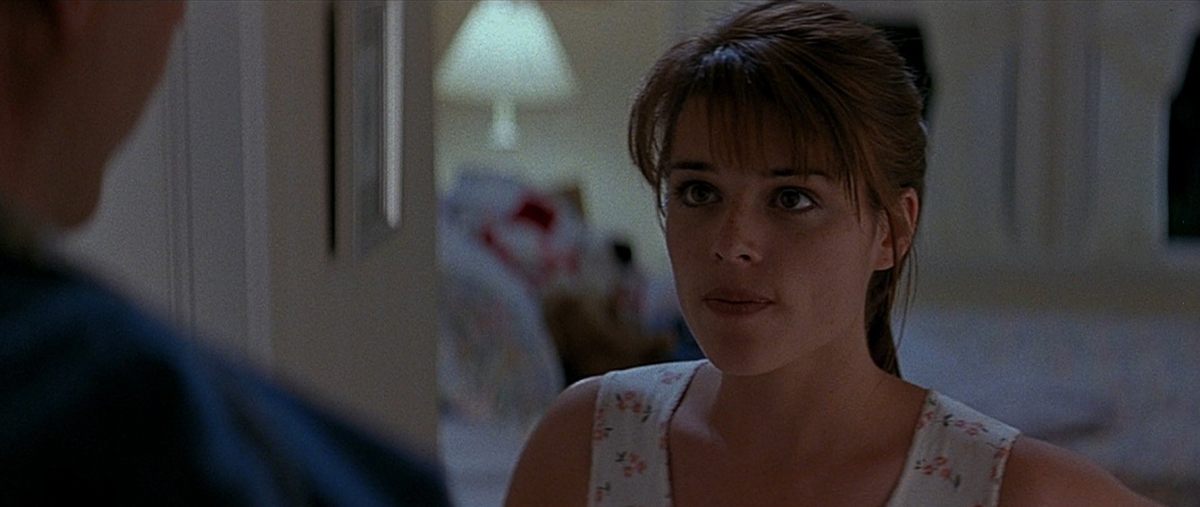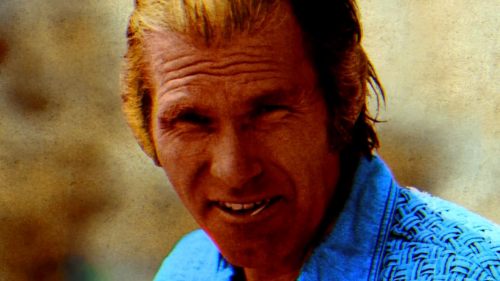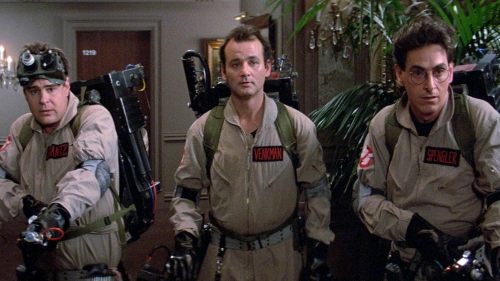Collins’ Crypt: How ‘90s Slashers Attempted To Evolve Beyond Their ‘80s Counterparts
Due to my love of slasher films above all other horror sub-genres, I actively sought out ones I had missed while I was on my Horror Movie A Day journey, and thanks to "if you liked that then you might like these" type recommendations from (dating myself here) Blockbuster and Netflix's disc rental services, I'd also find some I never heard of before. Sometimes it'd be for good reason; if this very sentence comprises all you know about the likes of Movie House Massacre or A Brush With Death, I advise you to keep it that way. But there were just as many that satisfied my slasher itch. I have said time and time again that I probably never would have seen slasher favorites like Cold Prey or Blood Rage if I wasn't actively tracking down stuff to make sure I had a new movie to watch every day. Basically, running that site for six years might have broken my brain, but in the end: WORTH IT!
But believe it or not, to this day I'm still finding more that had somehow gone under my radar. Just last week I was made privy to the existence of 1982's Girls Nite Out, aka The Scaremaker, which I had literally never heard of until I read a brief aside about it in a piece about actress Rutanya Alda, who has a small role in the film. And then a few months back a friend told me about Satan's Blade, which I didn't like all that much, but was wacky enough to warrant checking out if you're a hardcore slasher fan and want to know how a typical body count flick would work when all of the characters are in a tiny ski lodge (not very well, as it turns out). Discovering these golden era entries with zero expectations is a gift from the horror gods; no one has built them up, nor have I imagined how great they might be. I just get to dive in knowing nothing, which is hard enough for a new film let alone one that's been around for 35 years.
This also helps with the "nostalgia blinders" factor, where you tend to defend a movie you saw as a kid and fail to see its faults as an adult (or even if you do, you forgive them easily). I never heard of Girls Nite Out until five days ago, so I certainly didn't bump up my Letterboxd rating on account of it bringing back happy memories or being movie comfort food to me. In fact, it's technically a bad movie, but there's something so wonderfully "off" about it (there is no climax, for example - the movie just ends without resolving two major characters' fates, or subduing the killer) that I found myself endeared to it, anyway. Something similar happened with Final Exam: I had actually heard of it (thanks, Randy Meeks!) but never saw it until I was in my late 20s, and on my first viewing I noted that the film was a bit dull and was cribbing way too much from Halloween, but it had that je ne sais quoi that has resulted in me watching it several times since. I find its weirdo characters (particularly Wild Man, who sprays deodorant on his armpits, then into his mouth) incredibly memorable, and I love how it was so mercenary in its attempts to join the slasher class of 1981 that they didn't even bother coming up with an identity for the killer. His name is Killer, per the credits, and he has no discernible costume or anything - he's just some guy. Look at the pic - the victim has more of a costume than the would be iconic slasher.

What I'm trying to say is that there's a particular charm in the total lack of ambition or subtext in these older slashers. These are just a couple of examples (you know and I know I could happily go on for another dozen paragraphs about slasher movies before arriving at any particular point, if I even do); there are scores of others and that's just from the ones I've seen - this time next week I could be attributing the same thoughts to another body count flick that I hadn't yet heard of as of this writing. It's probably the biggest difference between the two major slasher waves (the post Halloween/Friday the 13th era, aka the golden era, and the post-Scream one of the late '90s/early '00s), as the newer films were often trying to say something or at least hold a mirror to social issues of the moment. It's something that never really dawned on me until I read Alexandra West's The 1990's Teen Horror Cycle (now available via McFarland Publishing), in which West finds that even the likes of I Still Know What You Did Last Summer had some reasonably decent attempts at tackling meatier issues (PTSD, primarily), something you won't find in say, Home Sweet Home, another 1981 slasher where they didn't bother to give the killer a costume or a motive. The book is a fairly quick read if you're interested in the topic, and West gives a lot of context for both Hollywood's attempts to cater to teens across all genres (Clueless gets its rightful due) as well as the real world at the time they were produced. Also, she put Urban Legend on the cover, which is how I noticed it in the first place. Advice for authors: if you want to catch my eye, put a frosted tipped Pacey on the cover, whether it's relevant or not.
Unsurprisingly, West spends a good amount of time on Scream and its sequels, due both to her acknowledged affinity for the original film (a gateway into her love of horror, per the intro) and their significance on so much of the horror that followed in the back half of the '90s. It not only inspired more slashers like Urban Legend and the revived Halloween series, but also things like The Faculty and Final Destination, which didn't deal with masked murderers but had similarly attractive young casts (often whitewashed ones, something Levy points out more than once) and an awareness that largely didn't exist in the horror of the '80s. Older films like Friday the 13th may have thrown in a reference to a real world figure ("Worst run of luck since Richard Nixon!") to establish that they weren't existing in some alternate universe, but Scream and its ilk often dove deep into such matters - their characters watched the same movies we did, and were just as fascinated by OJ Simpson's trial as we were. Scream 2's Mickey even namechecked both Alan Dershovitz and Johnny Cochran (OJ's lawyers) in his obligatory "Why I'm doing this" speech, and similar sentiments could be found in the other films of the era. West even manages to give Scream 3 (the series' low point, Parker Posey notwithstanding) credit for cementing Sidney's final break from the sins of her mother, becoming her own person who will most certainly not follow in the woman's footsteps (a fear she had in the first film, unmentioned in the first sequel). The attempts to make these characters more well fully fleshed than their golden era counterparts, even in lesser entries like I Still Know, is something that I don't think they got enough credit for at the time, and as a continued fan of these movies I'm happy to see someone defending them in print.
Another major difference that didn't quite click for me until I read the recaps of these films back to back was how often the protagonists' parents were involved in the '90s cycle, whereas outside of Nightmare on Elm Street they were almost completely MIA from the older ones. Take Mrs. Voorhees (aka Jason's mom), for example - she's the killer in the first Friday the 13th, but she isn't even mentioned until the film's final reel, when she appears for the first time and introduces herself (then reveals herself as the killer like two minutes later). Others made even less of an appearance: Laurie Strode's father is seen once in the beginning of Halloween; her mother shows up in a dream in part II - they're both alive but never around. Contrast this to H20, where Laurie was now the mother - the film spends just as much time with her as her teenaged (audience-pulling) son played by Josh Hartnett. Scream practically revolved around parents; Sid's mom's death kicked the narrative off and her dad was a suspect (and the planned fall guy for the actual killers, one of whom was instigated by his own parents' divorce), and in the famous opening, Drew Barrymore's corpse is found by her parents instead of a friend - a highly rare (and, speaking as a parent, super upsetting) occurrence. The non slasher teen horror films of the time followed suit: Katie Holmes' character in Teaching Mrs. Tingle was trying to avoid ending up like her mother (who wasn't a bad person; just an unambitious one who still worked as a waitress in her hometown), and the parents in Disturbing Behavior were the ones turning their kids over to be brainwashed.

They were also less adventurous; unless it was their college/boarding school, the kids in the 90s horror films rarely left their suburban neighborhoods - H20 even has the hero kids stick around at school rather than go camping! West theorizes a perfectly sound reason for this: the films were produced at a time in the country where the real world threats seemed to be coming from within. In the '70s and '80s we had Vietnam and the Cold War to worry about, fears that seeped into much of the horror of the era - the menace was "the other" and/or how easily you'll be killed when you venture out of your home into unfamiliar territory (like the woods, or a party train, or a coal mine, or...). With the US relatively free of foreign conflict during the Clinton era, the scarier things were in our own backyards: Columbine, Waco, Oklahoma City, etc., so it makes sense that the horror films were also largely set in/around the characters' assumed safe places - their homes or college campuses. In turn, it was unavoidable that the parents would play a bigger part than they would in the average Friday the 13th sequel, and also why the films resonated with younger audiences in ways the horror films of the first half of the decade could never manage. There was simply more for them to identify with, and in turn scare them.
But there's another big difference: this time the studios were producing the films with decent budgets and known stars, leaving the indies unable to compete. The best/most memorable slashers of the golden era were independent productions acquired by distributors after the fact, and while some (like Friday the 13th) lucked out with a major studio like Paramount, most others got released by smaller units that couldn't afford to strike a thousand prints. But when you watch them back to back now, there's not much difference in terms of quality or production value (not counting actors who went on to bigger and better things) between Friday the 13th and something like Madman that never got a wide release. This time around, with nearly every major studio producing their own wannabes (oddly, Paramount was one of the few exceptions) they had no need to pick up independently produced ones, so those films went direct to video, where they were usually passed over by fans who were probably more interested in renting the films Randy was talking about than cash-in titles like Lover's Lane or Memorial Day (both 1999). The more obscure golden era films will keep being discovered by the likes of me, but I have to wonder if the "Blockbuster Exclusive!" types will get the same extended lease on life. Will Scream Factory ever put out a special edition of something like Bloody Murder?
And now we're at the point where these films are just as old (older, in fact) as My Bloody Valentine and Prom Night were when Scream and its ilk was the talk of the town, and we could be seeing a revival again thanks to Happy Death Day's success and the upcoming Halloween. If we do get another mini wave, I'm curious how it will distinguish itself from the others, especially when you consider our current... let's say "heated" political climate. Can we once again count on slashers to be the "turn your brain off" alternative they were in the '80s, dated only by fashions and the occasional unfortunate line of dialogue? Or will they take cues from the '90s ones and make an attempt to reflect the attitudes and concerns of the time, "dating" them in ways that aren't exactly negative? And if so, how heavy handed will they be? If we see the late '90s cycle as an evolution from the early '80s one, will this next one take it a step further, or emulate the older ones that can help us forget the worries of the world for 90 minutes? As long as the posters aren't just a photoshop collage of all the actors lined up and staring at me, I'm sure I'll be happy either way, and hopefully authors like West will continue to defend them so it's not just me out there yelling about how good Urban Legend is.



